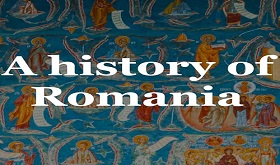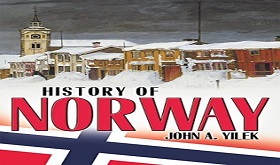History of Canada
Here is a look into the short history of Canada
Canadian history is loaded with fun. There are wins and misfortunes, bad guys and legends, fantastic battles and surprising injustices, devoted outsiders, and long fights for social value. The understanding of Canadian history might contrast, yet there are still occasions from an earlier time that are a significant feature and can be amounted as far as anyone is concerned bank.
The rich history of Canada is a bunch of encounters. In this article, we will analyze the various periods and occasions throughout the entire existence of Canada and give a few proper information concerning the headways that supported shape this staggering country into what it is today.
Aboriginal People
Exactly when Europeans found Canada, they investigated every one of the areas affected by neighborhood social classes they called Indians, considering the way that the principal adventurers thought they had shown up in the East Indies. The local people lived off the land, a few by yielding and raising harvests, others by get-together and hunting. The extraordinary lakes region known as the Huron-Wendat, like the Iroquois, were farmers and trackers. The Cree and Dene of the Northwest were trackers and ranchers. The Sioux were migrant, following the group of bison or the wild bull. The Inuit lived off Cold natural life. West Coast locals moderated fish by drying and smoking. Battling was typical among Native get-togethers as they pursued land, resources, and regard.
The presence of European troopers, teachers, settlers, and dealers changed the nearby way of life from now through eternity. Immense amounts of Aboriginals lapsed of European infections to which they needed invulnerability and required obstruction. Regardless, Aboriginals and Europeans formed strong military, strict, and monetary bonds in the underlying 200 years of combination, which laid out the structures of Canada.
First Europeans
From Iceland, the Vikings showed up at the island of Newfoundland and Labrador very nearly quite a while back and colonized Greenland. The leftover pieces of their settlement, l’Anse aux Knolls, are a World Legacy site.
The investigation of Europeans began unequivocally in 1497 with the undertaking of John Cabot, who was quick to draw an aide of the East Shore of Canada.
John Cabot, an Italian traveler to Britain, was quick to design the Atlantic shore of Canada, going to Newfoundland or Cape Breton Island in 1497 and stating the Newfoundland for Britain. English settlement didn’t begin until 1610.
Exploring a River – Canada
Somewhere close to 1534 and 1542, Jacques Cartier made three excursions across the Atlantic, announcing the land for Ruler Francis I of France. Cartier heard two caught directs express the Iroquoian word Kanata, meaning “town.” By the 1550s, the name of Canada fired appearing on the guides.
Imperial New France
In 1604, the principal European settlement north of Florida appeared by French trailblazers Samuel de Champlain and Pierre de Monts, first on St. Croix Island (in present-day Maine), by then at Port-Imperial, in Acadia (present-day Nova Scotia). In 1608 Champlain collected a post at what is as of now known as the Québec City. The pilgrims combat against an unforgiving climate. Champlain brought together the region with the Montagnais, Huron, and Algonquin, outstanding foes of the Iroquois, a confederation of five (later six). First Countries battled with the French settlements for a long time. The French and the Iroquois attempted compromise in 1701.
The French and Native people collaborated and worked together in the colossal economy of the fur exchange, driven by the interest for beaver pelts in Europe. Remarkable pioneers like Minister Laval, Count Frontenac, and Jean Claw collected a French Domain in North America that came from Hudson Sound to the Bay of Mexico.
The Continent Struggles
In 1670, Ruler Charles II of Britain permitted the Hudson’s Sound Organization restrictive exchanging freedoms over the watershed draining into Hudson Narrows. For the accompanying 100 years, the Organization equaled Montreal-based sellers. The courageous and capable men who went by kayak were called voyageurs and coureurs des Bois and outlined strong associations with First Countries.
English territories along the Atlantic shore, dating from the mid of 1600s, eventually, got more lavish and more swarmed than New France. During the 1700s, Extraordinary England and France battled for control of North America. In 1759, the English vanquished the French in the Skirmish of the Fields of Abraham at Québec City — signifying the finish of France’s domain in America. The officials of the two militaries, the Marquis de Montcalm and Brigadier James Wolfe, were killed while driving their warriors in a battle.
Following the conflict, Incredible England renamed the express the Territory of Quebec. The French-speaking Catholic people, known as habitants or Canadians, strived to save their way of life in the English-speaking English Domain governed by the Protestants.
The Upheaval of America
Debate over the split the difference of Quebec promptly spread all through the rest of English North America, and hardly had the Seven Years War completed when trouble began to roar in 13 areas of Britain that were south of the past New France. In the aftermath of the French whipping, various New Englanders hated how their English rulers chose to manage the new political variables of North America and turned out to be particularly harsh once London begun limiting their ability to move and get gotten comfortable the recently accomplished western regions in England, in previous Louisiana. The conflict against France had moreover demonstrated immense expense for Extraordinary England, which provoked inappropriately and detested climbs of assessments on colonials and scaling back of larger part just freedoms to quiet clash.
In 1776, a get-together of strong New Britain lawmakers declared independence from England and sent off a Progressive Conflict (1775-1783) that was upheld by France. It got done with the underpinning of one more country in eastern North American freed from English rule: The US of America.
Not the aggregate of Britain’s states had been willing to take part. The English settlement of Nova Scotia, the previous French Acadia and presently known as the fourteenth state, too would not partake, as did the vanquished French subjects of Quebec. The two get-togethers felt that despite the every now and again hostile rule of Britain, their honors and security were in the end better trusted to consistent, trustworthy England than the super American protestors.
The Loyalists
The Progressive Conflict was not all over standard in the 13 provinces. Like the Quebecers and Nova Scotians, colossal bits of New Britain didn’t maintain resisting English rules, and after war broke out, various families got away northward to Quebec, hoping to reside where Britain was at this point in charge. These explorers, named Followers for their relentless dedication to England and its master, are likely the most romanticized characters of Canadian history. Be that as it may, their precise motivations remain talked about.
The conventional rendition has been to depict the Followers as from an overall perspective conservative society (named “Conservatives” after the moderate gathering in English regulative issues), focused on the justification behind the government, domain, and social movement, rather than American progressive thoughts of libertarianism, republicanism, and a vote based system. This transformed into a renowned speculation among the people who seized the opportunity to look at Canada as a more standard and socially English country than the US.
In any case, the follower development emphatically extended the English-talking populace of Quebec in two or three brief years, making unprecedented worry for the French tenants who were restless currently about the perseverance of their specific culture and lifestyle. In 1791, England attempted to ease up these concerns by separating Quebec into two regions: Upper Canada for the English and Lower Canada for the French. Each region would have its own organization to provide it with a hint of political and social independence from the questioned people close by.
Results
In spite of the way that Canadians are generally not very many, they have made what various onlookers view as a model multicultural society, welcoming and inviting outsiders from any remaining mainlands. Likewise, Canada’s harbors send out a wealth of normal resources and capital rose to by various countries.


